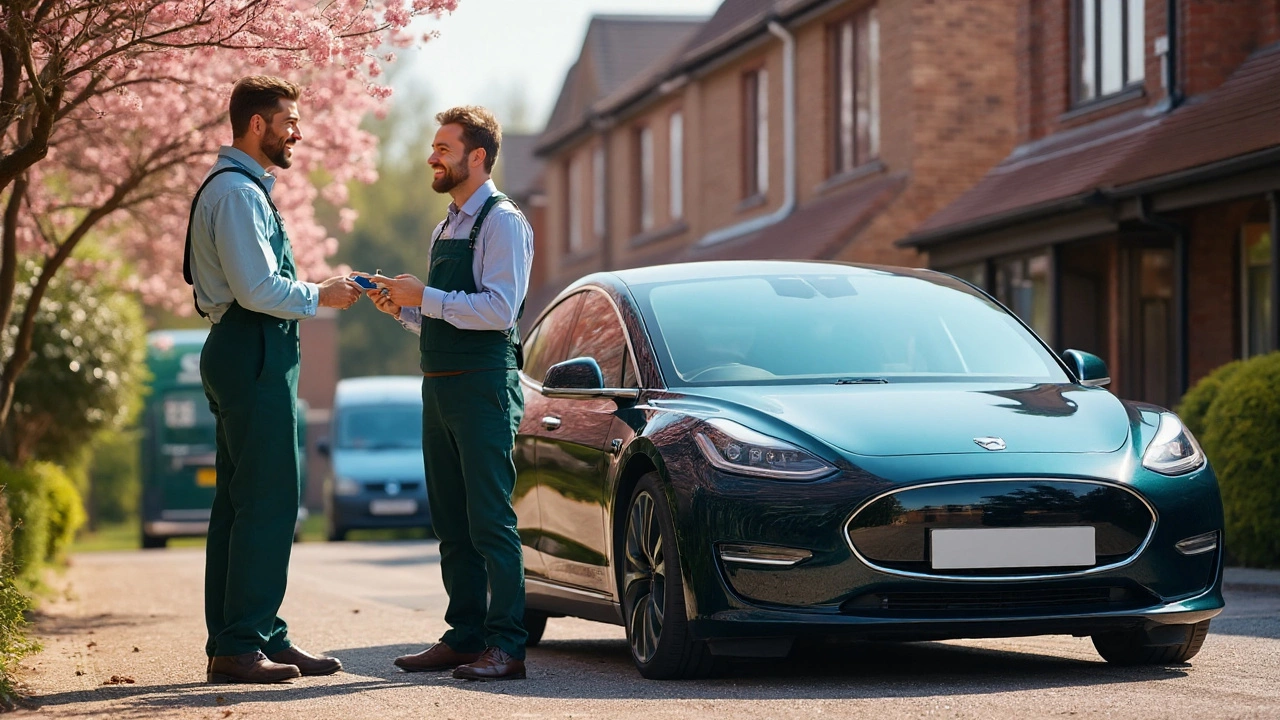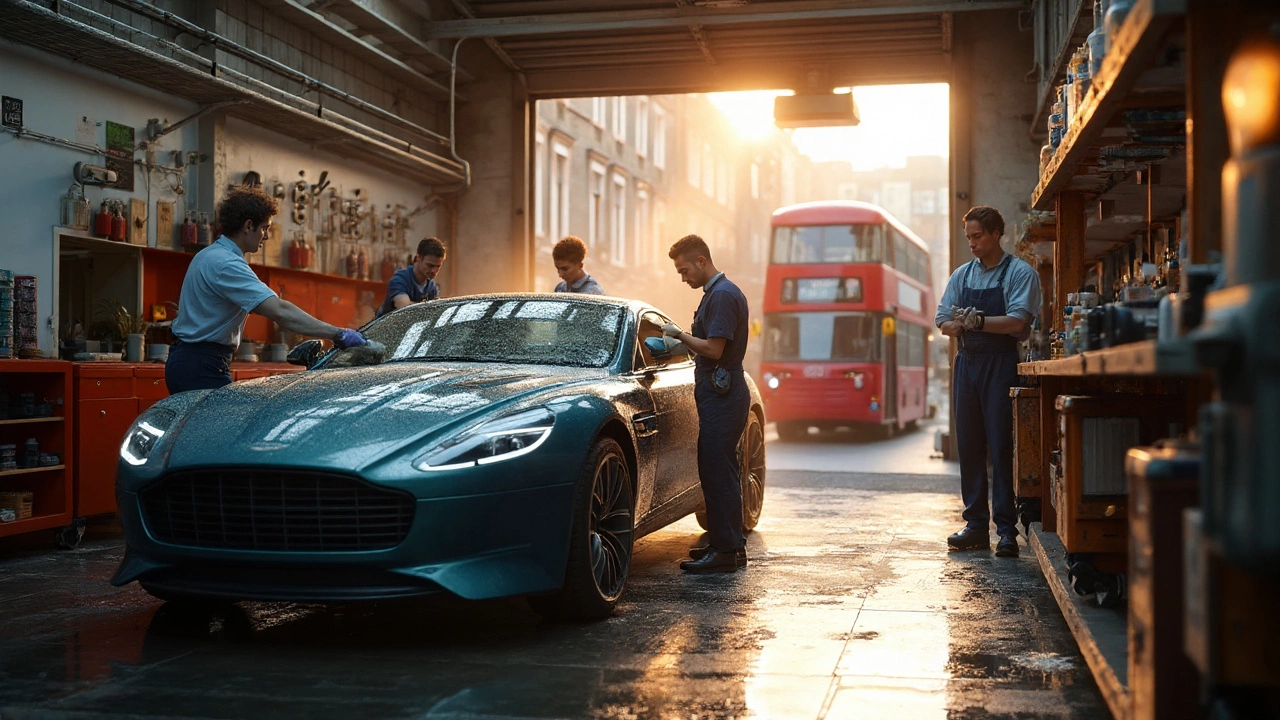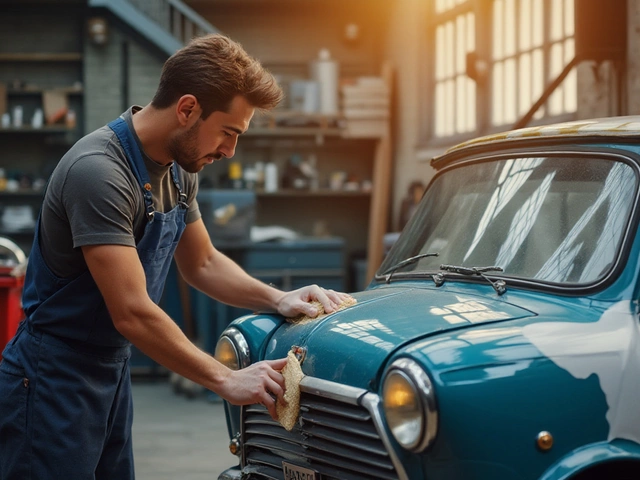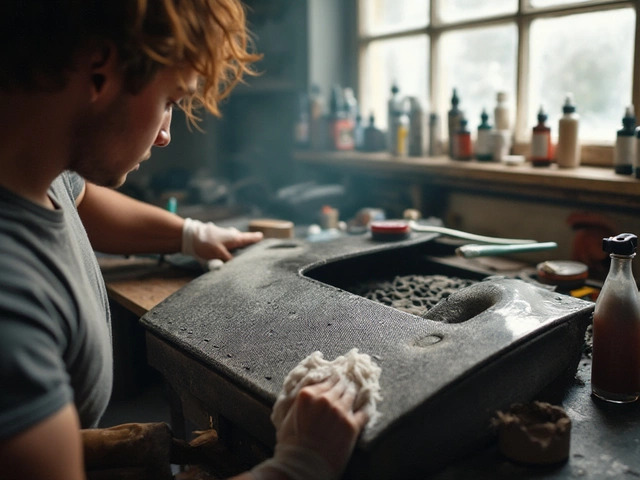If you’ve ever walked by a freshly detailed ride gleaming under the sun and wondered if the person cleaning it is cashing in big, you’re definitely not alone. Car detailing services are everywhere—tucked behind petrol stations, run from mobile vans, or set up in nice little commercial bays. Some shops charge $500 for a “premium detail,” others ask just $80 for a “quick clean.” Everyone’s chasing that shiny profit margin. But what do the real numbers look like? Are detailers rolling in cash after washing off someone’s Labrador hair and Coke stains? Or is there less gold in those microfiber mitts than people think?
Understanding Car Detailing Profit Margins
Okay, let’s get straight to the numbers, because the fluff usually hides what’s real. In Australia, full-time car detailers often see a gross profit margin somewhere between 50% and 65%. That’s before you take out things like taxes, insurance, and your own wages, but after you’ve paid for supplies and direct labour. Compare that to cafes, where margins hover around 15%—car detailing suddenly looks like a smart way to make money if you’re doing it right. If you’re just starting out with some basic tools, cleaning supplies, and a small van, you might earn even higher margins early on, since overhead is low. But as your business grows—maybe you open a workshop or hire more staff—margins can slip unless you’re careful.
The thing with car detailing is that it’s mostly a service game. A major cost is labour. The harder and longer you work, the more you keep. But, once you need to pay others or rent a tidy space in central Melbourne, your costs jump. A single car might cost as little as $8 to $20 in chemicals and supplies, but a customer may pay $150 to $450, depending on the package. Here’s a simple example: let’s say you charge $300 for a premium interior and exterior detail. If you spend $25 on products and $50 on your own time (valuing your time at $25/hour for 2 hours), that’s $225 gross profit—a 75% margin! But toss in insurance, superannuation, fuel, and marketing, and that margin narrows.
| Detailing Package | Average Customer Charge (AUD) | Direct Product & Chemical Cost | Estimated Labour Cost | Gross Profit | Gross Margin (%) |
|---|---|---|---|---|---|
| Express Wash | $90 | $8 | $25 | $57 | 63% |
| Standard Interior/Exterior | $150 | $14 | $50 | $86 | 57% |
| Full Premium Detail | $300 | $25 | $80 | $195 | 65% |
But margins aren’t set-and-forget. If you’re not careful, hidden costs creep in. Maybe you’re spending too much time on low-value jobs, or constantly replacing equipment thanks to wear and tear. Or maybe your pricing isn’t keeping up with rising product costs. Good car detailers keep a close eye on these numbers every week—not once a quarter.
Breaking Down Car Detailing Costs
First thing: a bucket and a sponge don’t cut it. If you want steady customers, you need decent tools—high-foaming shampoos, proper microfibre towels, dual-action polishers, tough spot-cleaners, and heaps of little brushes. Entry-level gear plus starter chemicals might set you back $1,000. Go pro, and you can drop $15,000+ on vacuums, steamers, extractors, a generator for mobile setups, and paint correction machines. By keeping your kit sharp and good quality, you avoid expensive repeats: cheap towels shred clear-coat, cheap chemicals leave sticky residue, and you need to redo everything.
Car detailing businesses face a few fixed costs (rent, admin, insurance, marketing), but most costs rise or fall with the number of cars you do. Mobile detailers have to keep their vans on the road—petrol, repairs, registrations—and might need special water tanks or upholstery extractors. If you’re in a permanent shop, you’re paying rent year-round, even in winter when things slow down.
Labour is the elephant in the room. Solo operators can earn more, but you’ll hit a ceiling. If you want to grow, you’ll need staff, and Australian laws mean paying proper wages plus superannuation and insurance. Training is another silent cost, especially for jobs like paint correction or ceramic coating. Get something wrong and you’ll cop a bad review—or pay to fix a customer’s paintwork. Marketing can’t be ignored. Google ads, flyers, or deals with local mechanics all eat away at profit, but without new clients, things go dead fast.
There’s also the stuff you might not think of at first: disposable gloves, uniforms, bookkeeping, booking software, a decent website, and maybe a secure payment system. Every small cost nibbles at your profit unless you’re tracking it hard. Savvy detailers use spreadsheets or cloud apps to watch expenses every week, not just when the accountant asks for receipts at tax time.

What Impacts the Profit Margin?
If you’re detail-obsessed, you can’t help but want to deliver perfect work—sometimes too perfect. Spending one extra hour buffing out swirl marks for free? There’s your margin, quietly marching out the door. Time management is probably the biggest factor for whether a detailing business gets rich or just tired. New detailers often skip tracking how long they actually spend on each car, and those extra little touches (cleaning the baby seat, fixing the coffee spill) somehow become ‘freebies.’
Pricing is the next big trap. The local market can be vicious: if Bob down the road offers a “full detail” for $99, it’s tempting to drop your prices—and slice your profits. That’s a mistake. Most thriving detailers carve out a niche, like high-end paint protection, fleet contracts, or classic car restoration. Others go mobile and charge a premium for convenience. If you’re just a commodity car wash, you’re racing to the bottom. If you solve a real problem—quick decontamination for tradie utes or pet-hair removal for young families—customers find you, and they’ll pay more.
Seasonality is real. Winter chills, pouring rain, or COVID-style lockdowns will empty your books. A smart approach is to book commercial clients—dealerships, real estate fleets, couriers—so you’re not begging for weekend family sedans in July. Specialisation helps too: some detailers make serious coin on ceramic coatings and paint correction, with margins of 70% or more, since the service is skilled and people expect to pay big money. Quick tips? Track your time, price for profit not desperation, offer a specialty service, and always upsell—interior steam, engine bay, ceramic upgrades. Small upsells can seriously move the needle.
How to Boost Your Car Detailing Profitability
If you’re in this game and want a real edge, the trick is to work smarter, not just harder. A few sharp moves can turn your car detailing hustle into something way more profitable.
- Bundling: Most people want both inside and outside clean—if you bundle them together at a decent discount, your average job value jumps.
- Efficiency hacks: Set up your workspace (or van) so you’re not running back and forth for gear. Save 10 minutes per job and do one extra car per day? Your weekly income grows.
- Upsell add-ons: Got a customer keen on a basic wash? Suggest an engine bay degrease, pet hair removal, or a headlight restoration. Say yes often enough, and your average profit per customer climbs by 20%-30%.
- Protect against no-shows: Take deposits online, or offer discounts for mid-week bookings to fill gaps. That keeps your schedule and bank account healthy.
- Use tech: Tools like Square or Fresha Booking help you fill jobs, automate reminders, and take digital payments so you’re not fumbling for cash at the end of a 10-hour shift.
- Loyalty programs: Punch cards or discount codes for regulars keep customers coming back. It’s much easier to rebook happy clients than find new ones every week.
There’s low-hanging fruit, too. Running out of supplies? Buy in bulk from a local wholesaler. Using mixtures wrong? Follow the manufacturer's advice so you don’t waste expensive chemicals. Forgetting tax deductions? Keep receipts for everything—fuel, insurance, even your work clothes. All these little savings stack up, quietly fattening your margin.

Should You Get Into Car Detailing for the Profit?
If you like seeing dirty cars turn clean and crisp, car detailing can absolutely be a money-spinner—but there’s hustle involved. The real profits go to folks who treat it like a real business, not just a side gig. You’ve got to manage hours, nail your pricing, keep costs lean, and constantly chase new customers. The job isn’t glamorous. You’ll get wet. Hands crack in winter. You vacuum dog hair from places you didn’t think were physically possible. Yet, there’s genuine pride in turning around a ‘bin on wheels’ into a ride someone’s stoked to drive again.
In Melbourne and most Aussie cities, there’s enough demand for a savvy car detailer to make $100,000 a year in turnover after a couple of years, especially if you focus on high-value offers like paint correction or full interior detoxes. Realistically, net profits after expenses (factoring in a proper wage, not just ‘what’s left at the end’) tend to fall between $40,000 for beginners and $80,000+ for a smart solo operator. Owners with multiple employees and contract deals can scale higher, but headcount and overheads eat at margins if they’re not sharp operators.
Last tip: watch your body and your brain. The best margin in the world means nothing if you’re injured or burnt out. Invest in good mats, proper masks, and don’t be shy about saying ‘no’ to jobs that don’t fit your business. Specialize as you grow. And remember: people aren’t just paying for a clean car—they’re paying for trust, quality, and convenience. Nail those, and the car detailing profit margin chase gets a whole lot easier.




